Chord-naming is derived from a few foundational music theory concepts, including intervallic relationships, such as major, minor, augmented, diminished, perfect, etc., in conjunction with scales, and key signatures.
To understand how chords are named and built, one has to know the basics of these musical theory concepts. That all said, how would one go about naming chords? The first thing we should look at is how they’re named.
Chords are constructed from their root notes, e.g., a G chord has G as its root. Whether the chord is major or minor depends on the interval between the root and the 3rd. Extended chords include added intervals. Chords can be arpeggiated or strummed, however, beginners normally prefer to strum them.
To name guitar chords
1) Identify the root note, the 3rd, and the 5th
2) Choose whether the 3rd is major, minor, augmented, or diminished, based on the scale on which the root note is based
3) Determine whether the 5th is perfect, diminished, or augmented using the root note of the scale
Chords can be quite complicated in terms of how they’re constructed as well as how they’re named. While the foundational chords are easy to construct and figure out, when chords become more complicated, they become harder and harder to discern.
How to Name Guitar Chords – Examples and Explanation
A chord like A Major, G Minor, or even A minor 7 isn’t terribly difficult to name or figure out from the title of it once you know the basic principles.
But what do you do when you have something a little more nuanced? For example, you could have a chord name that looks a lot like this:
C7b9 #9 #11 b13
Truthfully, you won’t see the above chord in any songs anytime soon, with the exception of some experimental music that isn’t on the Top 40 at all. Basically, what this means is that it’s a C Dominant 7th chord with a b9, also a #9, a #11, and a b13.
Due to the additional alterations on it, it likely wouldn’t sound much like a dominant 7th chord anymore, however.
In this lesson, we’re going to run through the very basics of chord construction, including some of the foundational things that make up a chord, how to go about naming them, how to identify them, and how to understand them.
You should also know that chords can’t be copyrighted so everything is free to use how you see fit.
1) Learn the C Major Scale
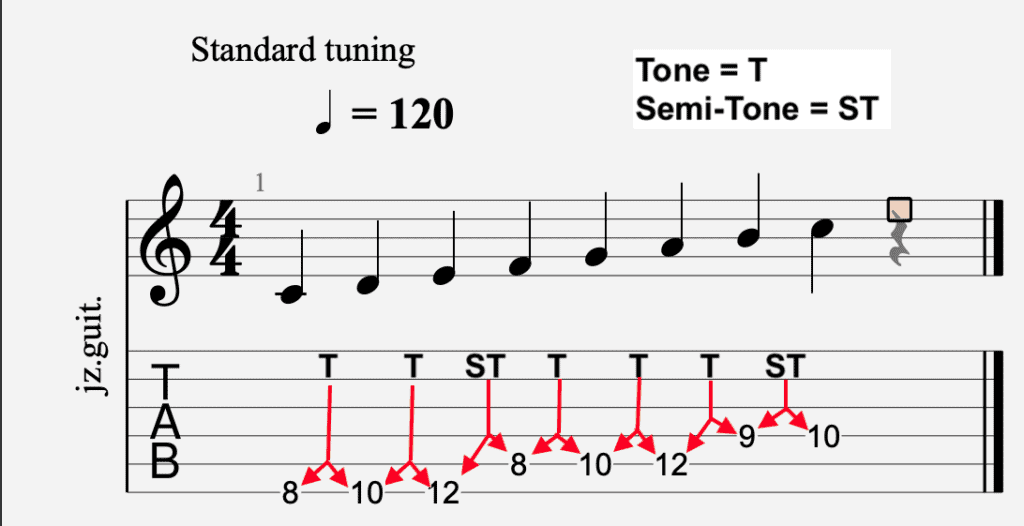
Right away, it’s best to start out with the regular C Major scale. The C-Major scale is essentially the foundation of Western music theory and it’s the scale/key signature that every teacher uses to teach the beginning stages of theory to their students.
It has no sharps or flats in it, and it’s usually discussed in context to Middle C on the piano/keyboard.
The foundational chords in Western music theory are known as triads. What that means is there are three notes per chord, and they’re usually two notes apart from each other. So here’s what the C Major scale looks like:
C, D, E, F, G, A, and B.
2) Learn What A Triad Is And How To Create One
A triad means that we’re taking the root, the third, and the fifth of that very same scale.
C, D, E, F, G, A, and B.
The root is C
The third is E
and the Fifth is G
Therefore, we have C, E, and G.
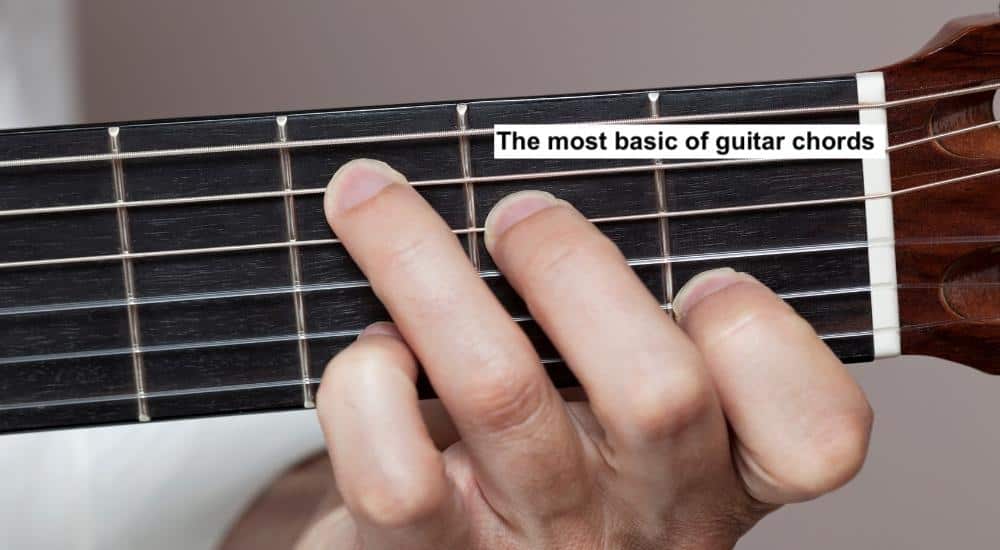
C, E, and G make up what’s called the C Major Chord, which means there is a Major Third in it as well as a Perfect Fifth.
These are called intervals, and they are terms that describe a particular sound that comes as a consequence of notes being a particular distance from each other.
It’s actually kind of intuitive.
The C and the E are a third apart from each other, and the C and the G are a fifth apart from each other.
In the C Major Scale, as I said above, there are no sharps or flats. It’s the Major scale, so it has a particular “Major” quality to it, which means it tends to sound bright, happy, or lively, with some exceptions.
C to E is a Major Third, and C to G is the Perfect Fifth.
3) Learn How to Identify A Minor, Major, Perfect, Augmented, and Diminished Interval
However, if you were to flat the E, Eb, that would turn that interval into a minor interval, more specifically, a Minor Third. The reason why it’s a Minor Third and not a Major third anymore is that Eb doesn’t belong to the Key of C Major.
It’s not a major interval anymore. Go ahead and grab your guitar/keyboard, and play a C and E together to see what it sounds like. It sounds Major.
Then play a C and an Eb together, and you’ll notice that it has a dissonant and “minor” sound to it.
Minor Chord = A Minor 3rd and a Perfect 5th
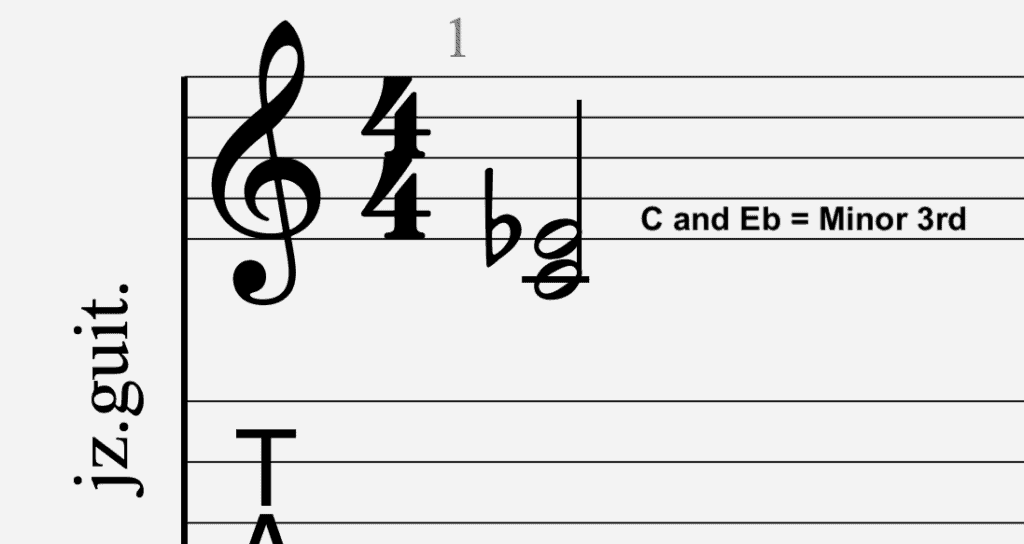
Now go ahead and play a C and a G, and you’ll notice it sounds quite nice. Now play a C and a Gb, which is now a Diminished 5th, rather than a perfect 5th, and it sounds a lot more dark and dissonant. That’s because Gb doesn’t belong to the key of C Major.
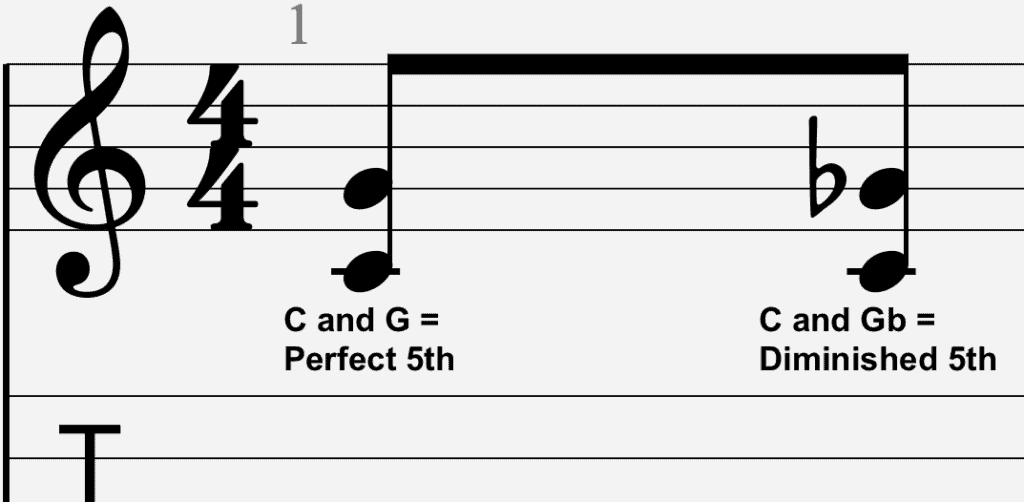
As I mentioned above, chord naming is derived from a few foundational music theory concepts, including intervallic relationships in conjunction with scales, and key signatures.
A C-major chord means you have a C, an E, and a G.
Major Chord = A Major 3rd and a Perfect 5th
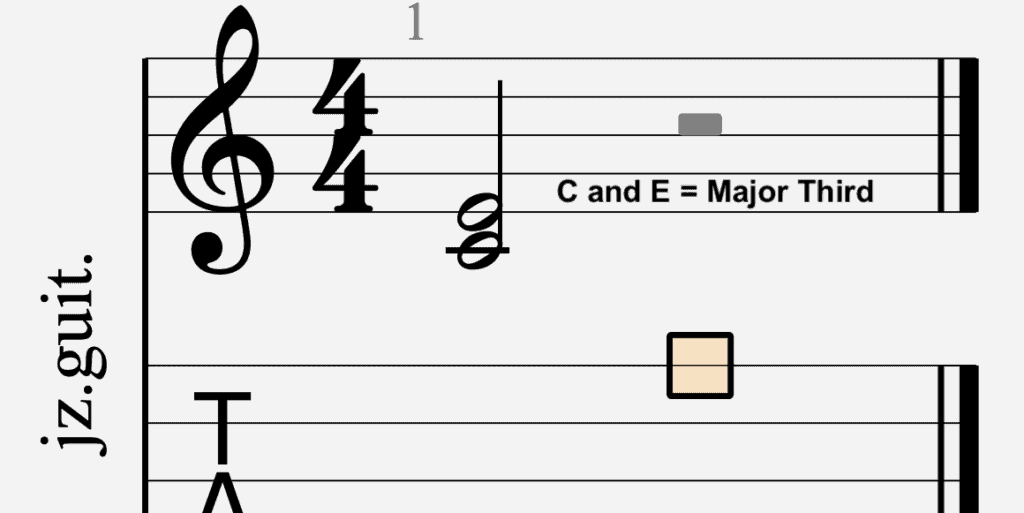
The root, third, and fifth. The Major Third and the Perfect Fifth.
A C Minor Chord has a C, an Eb, and a G. A Minor Third and a Perfect 5th.
In the Key of C Major, there is no Eb, however, in the Key of C Minor, there is an Eb.
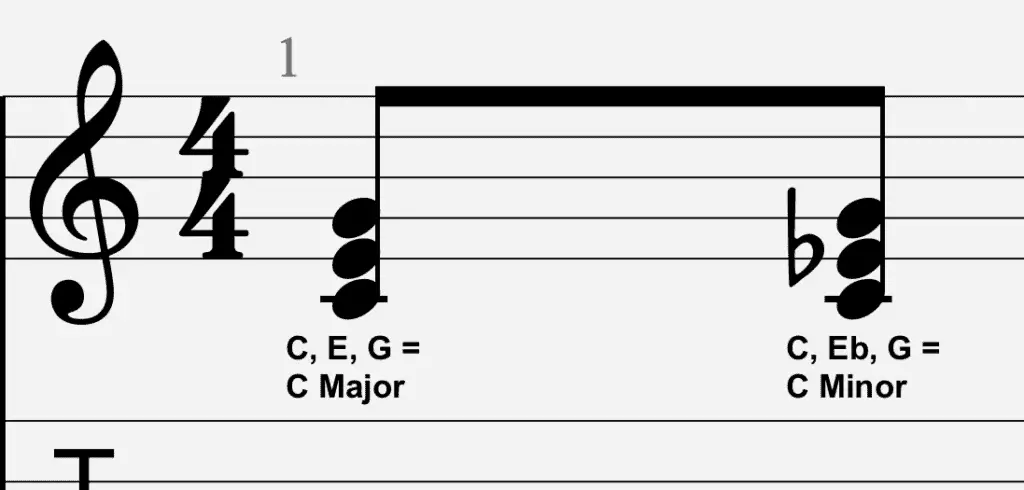
One of the most important parts of chord naming is the root of the chord.
For instance, a C7b9 means the following.
In the Key of C Major, there is no C7 chord. The C7 chord is the dominant 7th chord that actually belongs to F Major.
F, G, A, Bb, C, D, and E
If we re-organize the notes of the F Major Scale so it starts on C, it looks like this:
C, D, E, F, G, A, Bb
A C7 means you’re using the 1st, the 3rd, the 5th, and the 7th of the F Major Scale.
Which looks something like this:
C, E, G, and Bb.
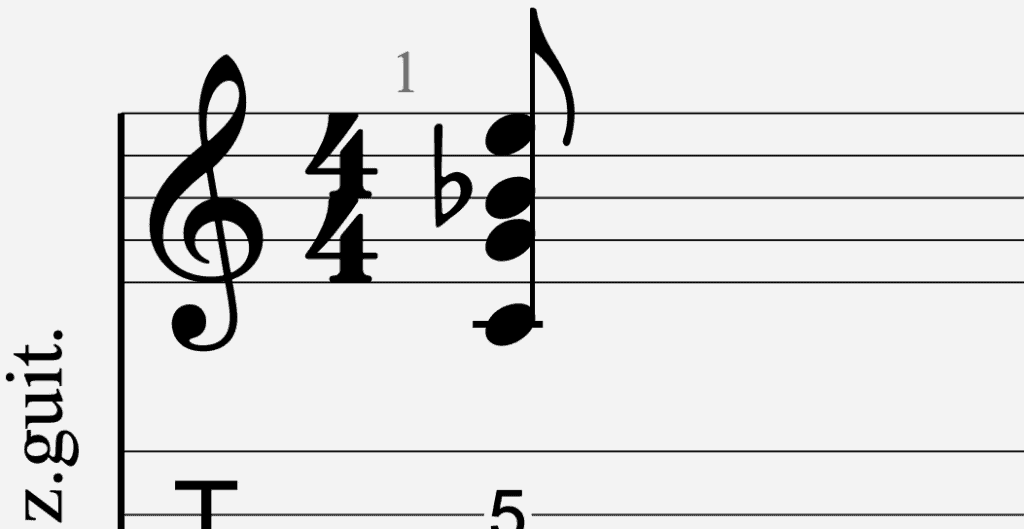
This is a C7 or a C Dominant 7th chord, and it’s the fifth chord of the F Major scale.

4) Understand That Notes Beyond 7 Are Just Repeated
So where does the b9 come from then?
The b9 means that you’re counting up from the root of the scale, and going up to the 9th note of the scale.
So here are the notes of the F Major scale up to the ninth note, starting on C; you’ll notice that the scale repeated itself over again because that’s how it works.
C, D, E, F, G, A, Bb, C, D, E
D is the ninth note of the scale. So the flat nine, b9, means we’re putting a flat on the ninth note of the scale.
In other words, it’s a Db note, also called a D-flat.
In the context of the aforementioned chord, the C7b9, it means that we’re using the following notes.
C, E, G, Bb, Db
You have the Major Third, the Perfect Fifth, the Minor 7th, alongside a b9 (Flat-Nine).
So where you can find these notes in the context of a musical scale or key signature? Well, you can find the C Dominant 7th chord in the F Major scale for instance.
The 5th chord of F Major is the C Dominant 7th (C7)
In the Key of F Major, you have the following notes:
F, G, A, Bb, C, D, and E
The fifth note of that is C.
So let’s construct a 7th chord (7, meaning there is a seventh interval along with the root, third and fifth).
C, E, G, and Bb
That is the C Dominant 7th, which is the fifth chord of F Major.
The musical term that’s added on to the C7, in this case, b9, means there is also a flat ninth degree, which is, as I said above, the flat D.
So you have, C, E, G, Bb, and Db
That is, therefore, the C7b9.
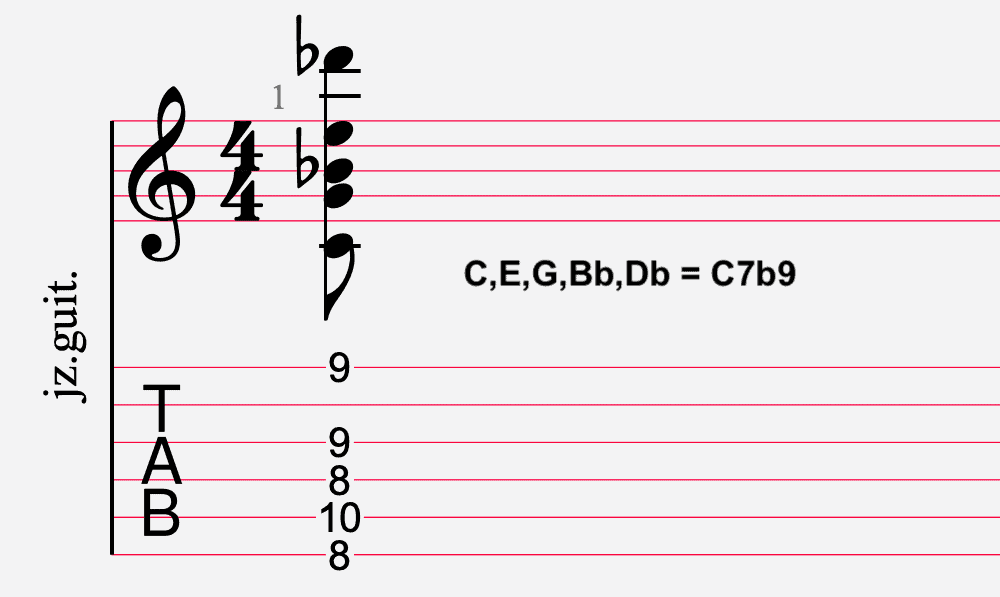
Let’s take it the next step further and make it even more complicated. So let’s use the chord I outlined at the beginning of the article, the C7b9 #9 #11 b13
C7b9 #9 #11 b13
Let’s lay out the notes of F Major in two different octaves to outline what the notes of this chord would actually look like.
F, G, A, B, C, D, E, F, G, A, B, C, D, E, F,
So you have the C7b9 part of the chord, which is precisely what I just laid above, the following notes:
C, E, G, Bb, Db
But there are also the new notes in it, the #9, the #11, and the b13.
A C7b9 #9 #11 b13 is the following notes, the #9, the #11, and the b13 added on to the C7b9:
C, E, G, Bb, Db, D#, F#, Ab
It’s not actually that complicated, because the numbers connotate at which point in the scale is the note, and then the sharp or flat communicates whether it’s a half-step down or a half-step up.
C (1),D(2), E(3), F(4), G(5), A(6), B (7),C(8), D(9), E(10), F(11), G(12), A(13)
C7b9 = C, E, G, Bb, Db
#9 = D#
#11 = F#
b13 = Ab
Therefore:
C7b9 #9 #11 b13 =
C, E, G, Bb, Db, D#, F#, Ab
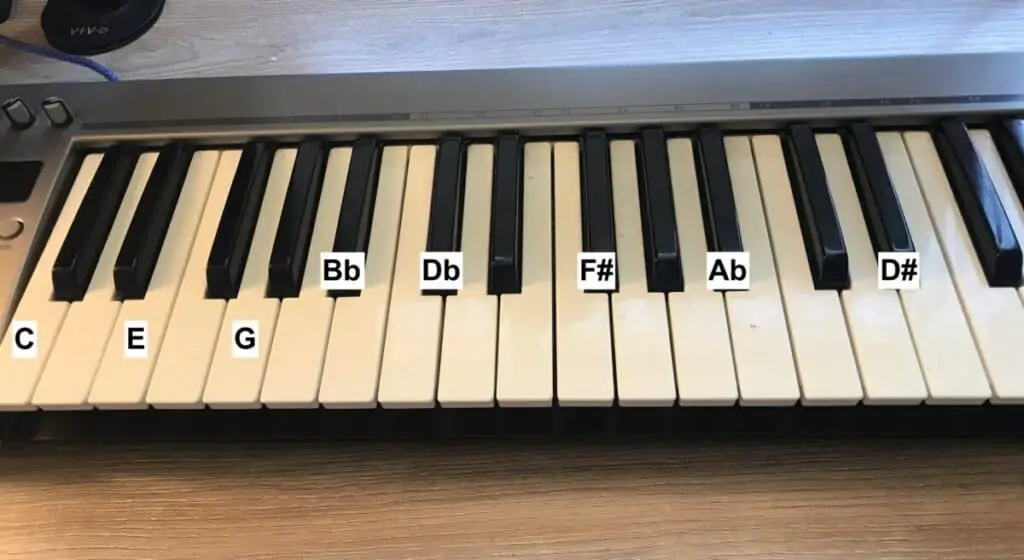
Go ahead and play those notes on the keyboard, because this will be impossible to play on the guitar.
5) What About Sus and X/ Chords?
There are two other concepts you should know, and those are the Sus and X/ chords. X represents a placeholder for where there would normally be a note, i.e., A/C Major. This just means that it’s a standard C major chord but there is an A in the bass.
And that’s really what those chords are. Any time there is a chord with a ‘/’ symbol, it usually indicates that there is. different root note in the bass that’s not actually part of the chord.
A “sus” chord is similarly easy. All it means is that there is a note in the chord that is temporarily taking the place of one of the main notes of the chord.
For instance, a Csus2 chord means there is the root and fifth like usual, however, there is now a 2nd degree which is taken from the C Major scale. This means the notes of Csus2 are C, D, and G.
The same principle applies to other sus chords, like a Csus4, for instance. A Csus4 is a C chord with the root and the 5th like usual, i.e., C and G, but there is the 4th note of the C Major scale added to it which is F. So a Csus4 chord is C, F, and G.
Other Articles You May Be Interested In
- Can Guitar Chords Be Used For Piano?
- Which Guitar Chords Sound Good Together?
- Memorizing Key Signatures (A Detailed Guide With Examples)
- Why Is It Important To Learn Chords on Guitar? [SIMPLE]
- What Are The 3 Main Chords on Guitar
- How to Harmonize in 3rds (Major and Minor) on Guitar [EASY]
YouTube Video Tutorial


 Written By :
Written By :
